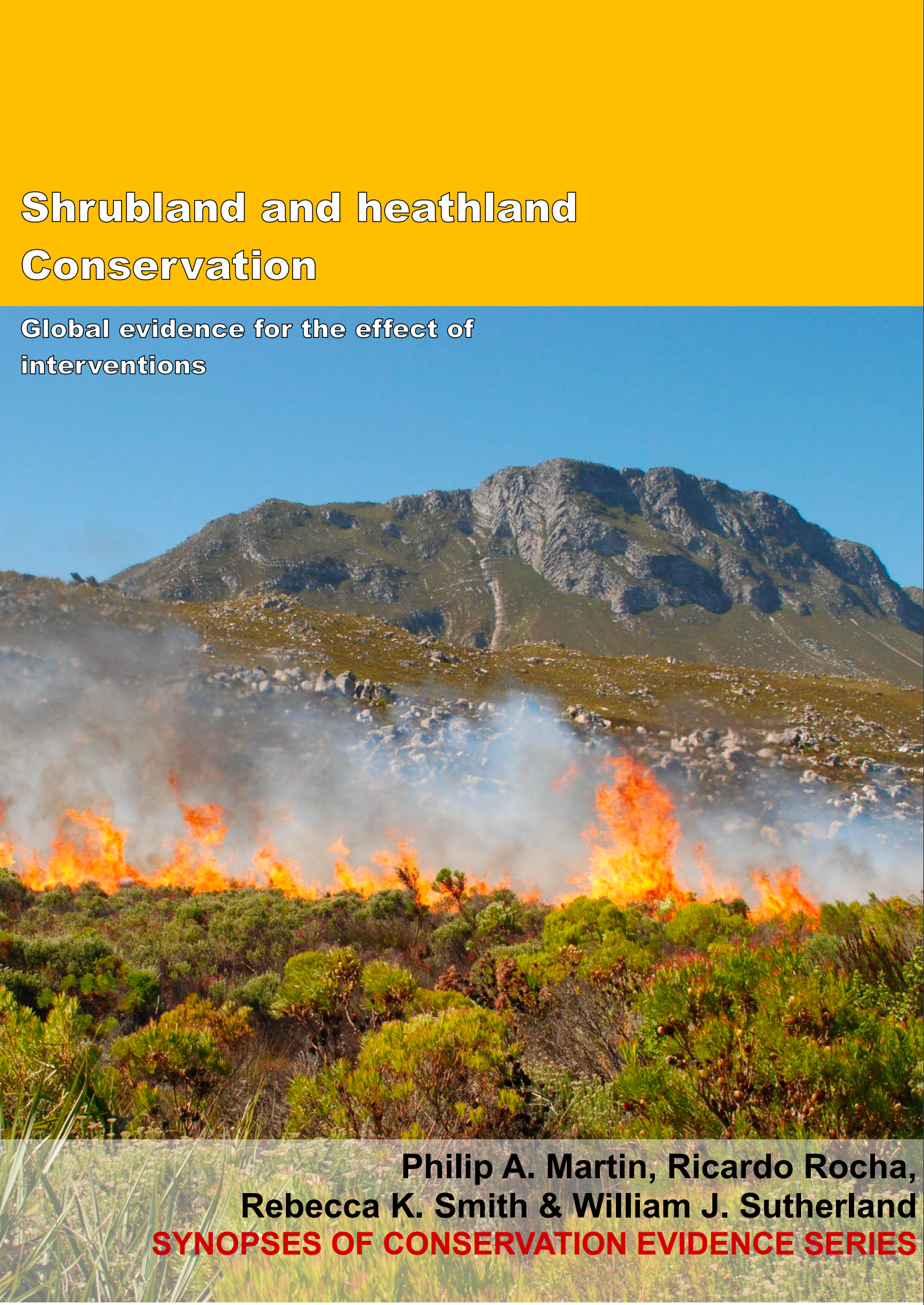Cut trees and use prescribed burning
-
Overall effectiveness category Unknown effectiveness (limited evidence)
-
Number of studies: 3
View assessment score
Hide assessment score
How is the evidence assessed?
-
Effectiveness
40% -
Certainty
35% -
Harms
5%
Study locations
Supporting evidence from individual studies
A replicated, before-and-after trial in 1997–2006 at a sagebrush steppe site in Oregon, USA (Bates & Svejcar 2009) found that cutting and burning of western juniper Juniperus occidentalis trees followed by prescribed burning increased the cover of herbaceous plants. After nine years, herbaceous plant cover was higher after cutting and burning (29%) than before cutting and burning (6%). In ten 0.5 ha plots all western juniper trees were cut using chainsaws and then burned. Herbaceous plant cover was estimated before cutting and burning and then after burning in 1998–2001 and 2006 using ten randomly located 0.2 m2 quadrats in each 0.5 ha plot.
Study and other actions testedA replicated, randomized, controlled, before-and-after trial in 2002–2006 in two sagebrush steppe sites in Idaho, USA (Bates et al. 2011) found that cutting of western juniper Juniperus occidentalis followed by prescribed burning had no effect on the cover of most shrubs, but increased cover of herbaceous species. After three years, big sagebrush Artemisia tridentata, mountain snowberry Symphoricarpos oreophilus, and gray rabbitbush Ericameria nauseosa cover was not significantly different between areas that had been cut and burned and unburned, uncut areas (data reported as model results). Cover of snowbrush Ceanothus velutinus was higher in cut and burned areas than in unburned, uncut areas (data reported as model results). Cutting and burning increased herb cover (45% cover) relative to uncut, unburned areas (18% cover). Cutting and burning of western juniper trees reduced their numbers from 424 trees/ha to 2 trees/ha after 3 years. Trees were cut and burned in forty 1 ha plots with a further twenty 1 ha plots left uncut and unburnt. Four 6 x 50 m transects located on each 1 ha plot were surveyed to estimate western juniper numbers. Four 2 x 50 m transects/plot were used to survey shrub cover. To survey herbaceous cover 0.2 m2 quadrats were placed every 2 m along transect lines.
Study and other actions testedA controlled study in 2010-2012 in fynbos habitat invaded by non-native trees in Western Cape Province, South Africa (Ruwanza et al. 2013) found that cutting of non-native trees, followed by burning, reduced the cover of non-native trees and native woody plants but did not alter herbaceous cover. After two years, areas where non-native trees were cut and burned had a lower non-native trees cover (41%) than areas where they were not cut or burnt (56%), but a higher cover than in a relatively undisturbed fynbos site (7%). Cover of native woody species was lower in areas where non-native trees were cut and burned (0%) than in areas that were not cut or burnt (10%), and also lower than in a relatively undisturbed fynbos site (60%). Cover of native herbaceous plants was not significantly different in areas that were cut and burned (1%) and areas that were not cut or burnt (0%) or in an undisturbed site (0%). In 2010 non-native trees were cleared and burned on part of the site. Eight 25 m2 plots were established in areas where trees had been cut and burned, eight in areas where trees were not cut or burned, and four in a nearby undisturbed fynbos site. Vegetation cover was estimated in the plots in 2011 and 2012.
Study and other actions tested
Where has this evidence come from?
List of journals searched by synopsis
All the journals searched for all synopses
This Action forms part of the Action Synopsis:
Shrubland and Heathland Conservation
Shrubland and Heathland Conservation - Published 2017
Shrubland and Heathland synopsis





)_2023.JPG)














